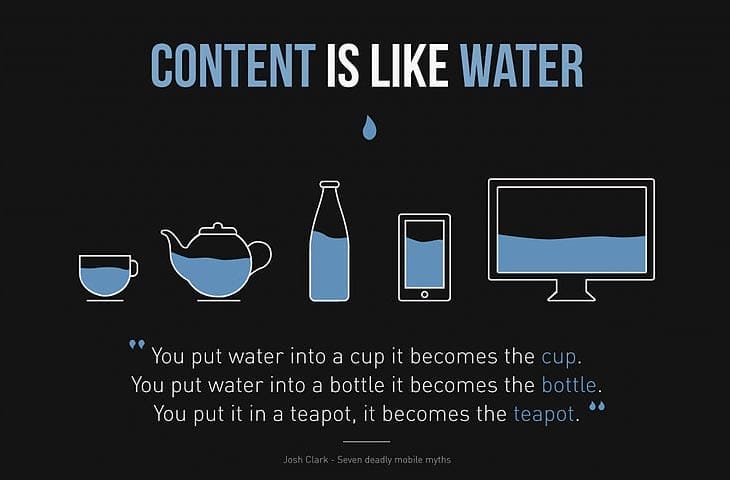Is Responsive Web Design Really The Future?
Web developers and online businesses are constantly looking for ways to improve, enhance and perfect their online presence.
In the last few years, many internet trends signalled to be the “next big thing” have come and gone. So with responsive web design currently making the biggest waves in the web development world, how can we know if it’s really here to stay?
See also : Send a Message With Your Color Scheme
What is responsive web design?
Before the advent of tablet computers and smart phones, the majority of people viewed the internet on a PC or Mac computer. This meant that screen sizes varied very little across the spectrum, so a website could easily be designed in a ‘one size fits all’ manner.

Today an increasing number of people are using devices with differing screen sizes to browse the web.
However today more and more people are using mobile devices to browse and interact with the Internet. This means that a single website can now be displayed on a wide variety of screen sizes, every one of which will present a site in a slightly different way.
Previously, users would either need to pan and scroll across a standard site or be directed to a mobile site to find the information that they were looking for.
Responsive web design allows the content to adjust automatically to whichever screen size it is being viewed on. So the site appears on your smart phone exactly as it would on your desktop computer.
What are the benefits?
Responsive web design benefits both the website owner and the user.
Whereas in the past a company or individual would either have needed two sites – a standard site and a site tailored to mobile devices – or accepted that customers viewing the site on different screen sizes would have had a poorer user experience, now the business can simply create one site that can be viewed quickly and easily by all.
This does away with a lot of the duplicate content that appears when you have two sites makes users a lot more likely to return to your site in the future. As the trend continues to grow many web designers in Hertfordshire, London and the surrounding areas are adopting responsive site design into all their website builds.
What are the disadvantages?
There’s no getting around the fact that creating a responsively designed site is more expensive than a standard site. And even if you’ve got an idea about coding and web design, you’ll probably have to hire someone to create and develop a responsive site for you.
There are also some issues when it comes to advertising as any adverts on your site must also shift and adjust to the screen. This can cause problems when advertisers want a guaranteed placement for their ad.
Do you need a responsively designed website?
If you’re not sure if investing in a responsive design will be worthwhile for you, have a look at Google Analytics or another analytical site to see how many of your visitors are currently using phones or mobile devices.
If more than around 5% of your visitors are using devices with smaller screen sizes, it could be a good idea to create a site that will work for them as well.

Responsive web design allows content to shift and adjust to suit the screen.
Is it the future?
Judging by the shear numbers of people now browsing the internet on their phones or mobile devises, the demand for responsively designed site is set to grow.
And unless someone comes up with a better solution, it won’t be long until all websites are responsively designed.
When it comes to the internet, the future is incredibly hard to predict. But with current trends moving towards a multitude of devices becoming internet enabled, it seems inevitable that before long, all websites will be responsively and intelligently designed.

